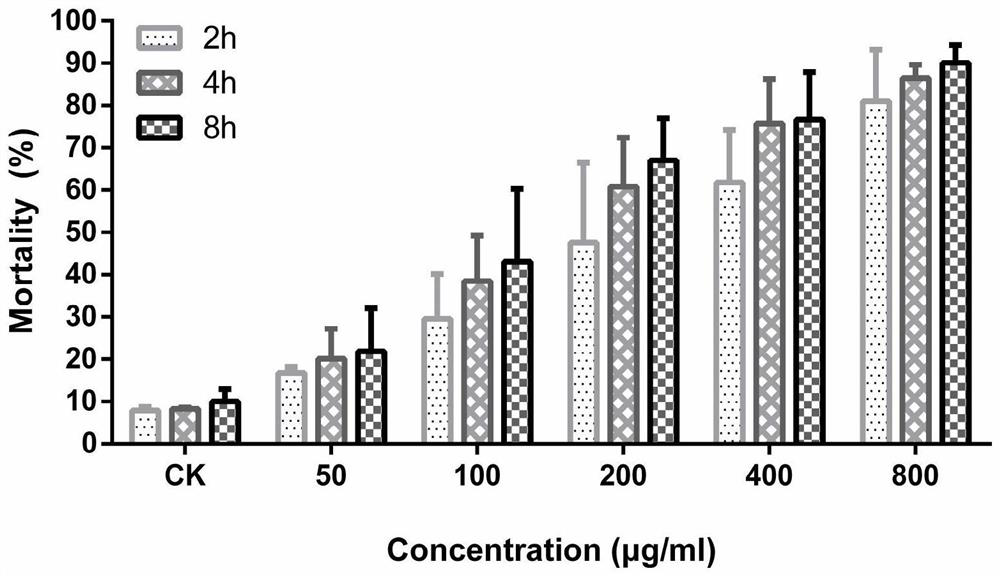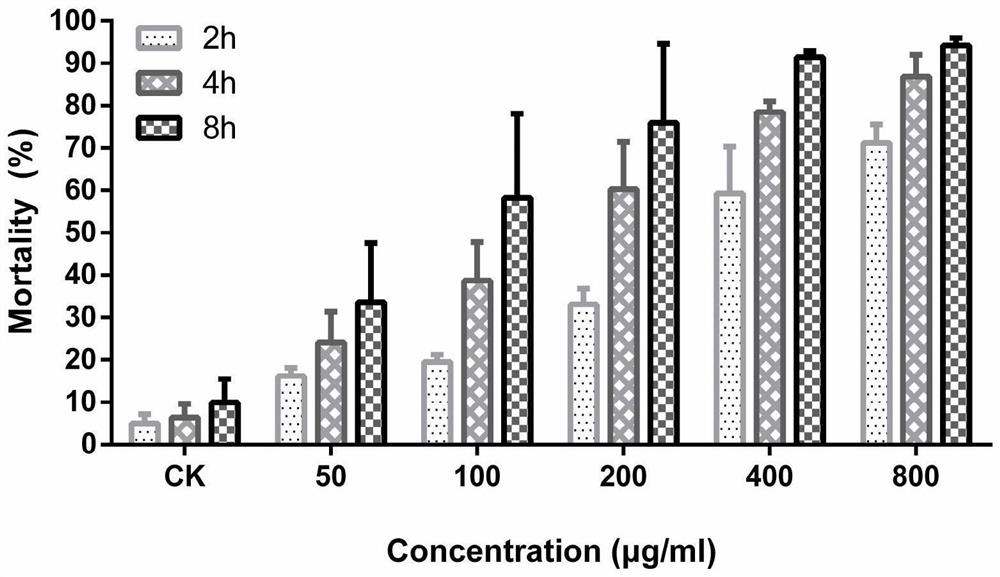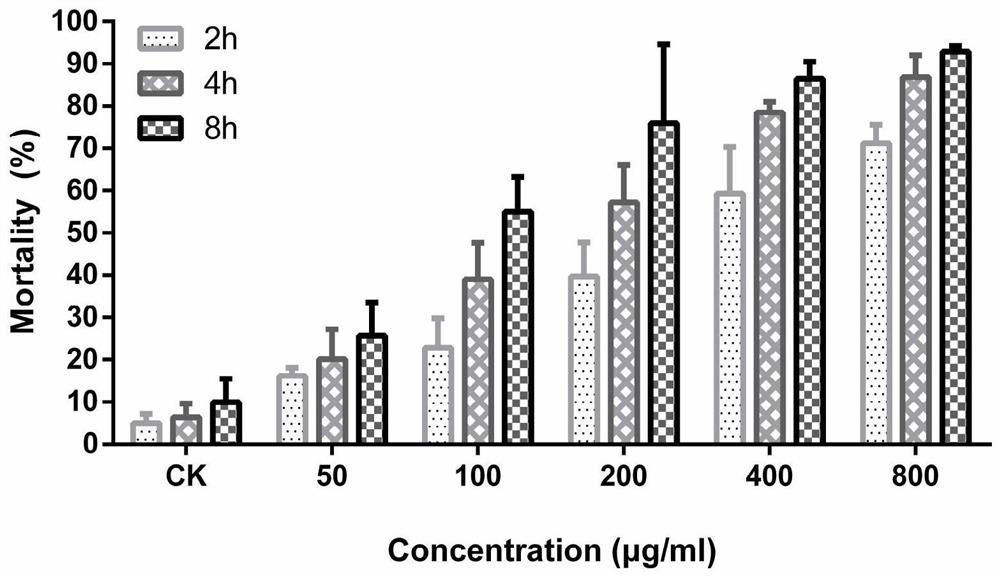Insecticidal genes of the e family of Leopard pseudoringenia and their encoded mature peptides and their application
A pseudo-ringed leopard spider, insecticidal gene technology, applied in the application, insecticide, genetic engineering and other directions, can solve the problem of not meeting the needs of insect resistance gene selection, and achieve maximum protein yield, high activity, and optimized induction. The effect of the condition
- Summary
- Abstract
- Description
- Claims
- Application Information
AI Technical Summary
Problems solved by technology
Method used
Image
Examples
Embodiment 1
[0041] Preparation of toxin
[0042] Design and Construction of Spider Toxin Gene
[0043] The pseudoringed spider was collected from the paddy field in Pukou District, Nanjing City, Jiangsu Province, and was reared indoors with brown planthoppers for 90 days. The venom glands were obtained and the transcriptome was sequenced. According to the number, arrangement, domain prediction and sequence analysis of cystine, a class of candidate genes of quasi-annular toxins were obtained, and one of them was selected, namely PPTX-08, whose base sequence was shown as SEQ ID NO. 1, the amino acid sequence of its encoded protein is shown in SEQ ID NO.5, its signal peptide and mature peptide are predicted by SpiderP (http: / / www.arachnoserver.org / spiderP.html), and its mature peptide sequence is Bacteria codon preference was optimized for codons, and the PPTX-04 toxin gene sequence for expression in Escherichia coli was designed as shown in SEQ ID NO.13. The designed gene was synthesized b...
Embodiment 2
[0053] Using the design and construction method of the spider toxin gene in Example 1, the insecticidal genes SEQ ID NO.2-4 of the pseudoringed leopard spider were prepared: PPTX-11, PPTX-36, PPTX-54; and through the same method The corresponding recombinant plasmids were constructed and expressed in large quantities respectively, and recombinant toxins encoded by different genes were obtained after purification.
[0054] The nucleotide sequence of the insecticidal gene PPTX-08 of the pseudoringed leopard spider is SEQ ID NO.1, as follows:
[0055] atgaattccaagatatttgctgtcctacttttattagccattacgacatgcgttctgtctgagcaatattgtccaaagtcaagtctttcaccttgcaaaaagataaatatcaggaacgattgctgtaaggatgaagactgcactggtggtagttggtgctgtgcgacgccctgcggtaacttctgtaaatatccagtagacaggcctggtggtcaaagggctgccggaggttcaagctgtaaaactggttatgtgtat
[0056] The nucleotide sequence of the insecticidal gene PPTX-11 of the pseudoringed leopard spider is SEQ ID NO.2, as follows:
[0057] atgagctccaagtactttactgttatattgcttgtagc...
PUM
 Login to View More
Login to View More Abstract
Description
Claims
Application Information
 Login to View More
Login to View More - R&D
- Intellectual Property
- Life Sciences
- Materials
- Tech Scout
- Unparalleled Data Quality
- Higher Quality Content
- 60% Fewer Hallucinations
Browse by: Latest US Patents, China's latest patents, Technical Efficacy Thesaurus, Application Domain, Technology Topic, Popular Technical Reports.
© 2025 PatSnap. All rights reserved.Legal|Privacy policy|Modern Slavery Act Transparency Statement|Sitemap|About US| Contact US: help@patsnap.com



